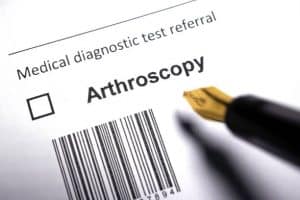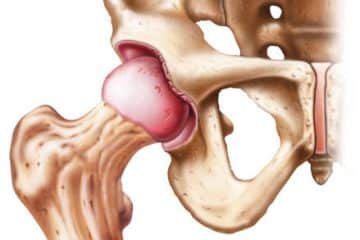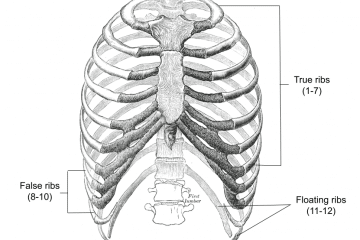Ankle Arthroscopy – Overview

Ankle Arthroscopy is a minimally invasive surgery in which a tiny, gentle, and adaptable tube with a lamp and video camera at the end is introduced into the ankle joint to properly assess and treat various conditions. It has proven to be highly effective in managing various ankle disorders such as ankle arthritis, unstable ankle, ankle fracture, osseous and chondral defects of the talus, infection, and untreated ankle pain.
Around the ankle joint, your doctor will make two or three tiny cuts. An arthroscope is introduced through one of the incisions. Sterile fluid is also poured into the joint to widen the joint region and provide the surgeon more space to maneuver.
The surgeon can see the joint immediately on the television monitor, allowing him to identify the degree of the damage and treat it properly. To examine and correct the condition, surgical equipment will be placed into the other small incisions.
The equipment is withdrawn after surgery, and the incisions are stitched and covered with a bandage.
Indications of Ankle Arthroscopy
Arthritis: For many patients with end-stage ankle arthritis, ankle fusion is a feasible therapy option. Ankle arthroscopy is a minimally invasive procedure for fusing the ankle. Open procedures can produce results that are comparable to or better than closed techniques.
Ankle fractures: Ankle arthroscopy may be performed in conjunction with open fracture healing procedures. This can aid in maintaining correct bone and cartilage alignment. It can also be utilized to examine for cartilage damage inside the ankle during ankle fracture repair.
Ankle instability: occurs when the ligaments in the ankle become stretched out, giving the sensation that the ankle is giving way. Surgery is often wont to tighten these ligaments. For moderate instability, arthroscopic methods may be an option.
Ankle impingement: It is a condition in which the bone or surrounding tissues near the front of the ankle joint become inflamed. Ankle discomfort and swelling are common symptoms. The ability to flex the ankle up may be limited as a result of it. It is typically painful to walk uphill. On an X-ray, bone spurs can be observed. Inflamed tissues and bone spurs can be shaved away using arthroscopy.
Arthrofibrosis: Arthrofibrosis is a painful and stiff joint caused by it. Ankle arthroscopy can be used to locate and remove scar tissue.
Osteochondral defect. OCDs are most commonly caused by ankle injuries such as fractures and sprains. Ankle discomfort and swelling are common symptoms. Patients may experience ankle catching or clicking. Scraping away the damaged cartilage and drilling small holes within the bone to assist healing are common surgical procedures. Procedures such as bone grafting and cartilage transplantation are also available.
Synovitis. It is an inflammation of the soft tissue lining of the ankle joint (synovial tissue). This results in swelling and pain. Injury and overuse can both contribute to it. Synovitis can be caused by inflammatory arthritis and osteoarthritis. Ankle arthroscopy is a surgical procedure that can be performed to excise inflammatory tissue that has not responded to nonsurgical treatment.
Undiagnosed ankle symptoms. Patients may experience symptoms that are not explained by established diagnostic methods. Arthroscopy allows doctors to peer straight inside the joint. The surgeon will then be able to identify any issues that may require surgery.
Portals Used in Ankle Arthroscopy
- Anteromedial portal
Function
- Main access point
- Usually, the foundation is laid first.
- Anteromedial joint access
Location and approach
- Lateral to medial malleolus and medial to tibialis anterior.
- Establish a portal between the anterior tibialis and the saphenous vein.
- Anterolateral portal
Function
- Main access point
- Anterolateral joint access
Location and approach
- Just lateral to the peroneus tertius and superficial peroneal nerve, as well as medial to the lateral malleolus.
- Prior to the cut, the superficial peroneal nerve can be identified.
- Posterolateral portal
Function
- Access to the os trigonum via the posterior looking port.
Location and approach
- Two cm from the top of the lateral malleolus.
- Lateral to achilles tendon, medial to peroneal tendon.
- Posteromedial portal
Function
- Access to the os trigonum via the posterior viewing port
Location and approach
- Right ahead of the achilles tendon
Advantages
- Scarring is reduced.
- Healing time is decreased, and the danger of infection is lowered.
- Spending less time in the hospital
- Postoperative rehabilitation time is reduced.
- Several procedures, including ankle fusion operation, have improved outcomes.
Complications of Ankle Arthroscopy
- Ankle arthroscopy is a surgery that is generally safe and has a low complication incidence.
- Infection is a possibility with any surgery that involves the introduction of tools into a typically sterile environment.
- Injured blood vessels can also cause bleeding.
- Some individuals may experience local nerve injury as a result of the operation, which causes the overlying skin to become numb.
- Using any kind of anesthesia carries dangers, which vary based on the type used.
References
https://www.footcaremd.org/conditions-treatments/ankle/ankle-arthroscopy
https://medlineplus.gov/ency/article/007584.htm
https://pubmed.ncbi.nlm.nih.gov/2187776/
See Also
Postural Orthostatic Tachycardia Syndrome

Dr.Sharif Samir Alijla, is a general medical doctor and a well-rounded professional that cares and treats patients from Palestine. I participated in many medical studies and conferences, I've launched a range of community initiatives and taken part in a variety of leadership and change training programs. I worked as an author for many medical websites such as TebFact . I specialized in writing medical articles from authoritative and updated sources in a simple and smooth the way for the reader.



